
Discover more at Lyveden
Find out when Lyveden is open, how to get here, the things to see and do and more.
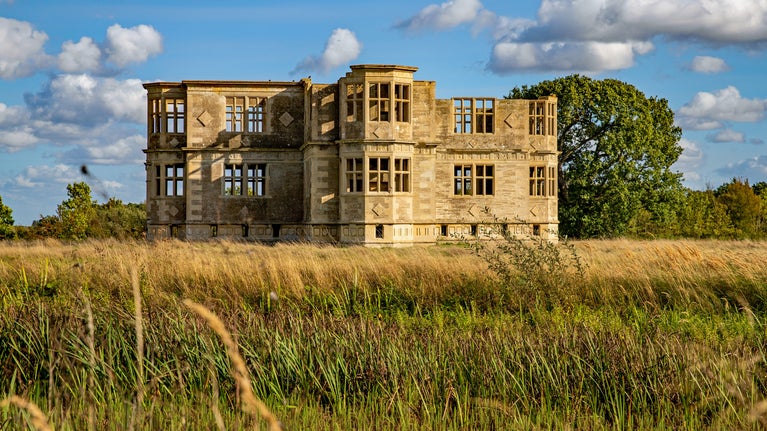
Situated in rural Northamptonshire, Lyveden is the unfinished vision of Sir Thomas Tresham (1543–1605). From the Catholic symbolism of the three-storey lodge to the remarkable Elizabethan garden, Lyveden transports us to the intellectual and religious world of Sir Thomas in the late 16th century. The Gunpowder Plot, besiegement and a series of owners with international links have all left their mark on Lyveden through the centuries.
People have lived in the valley of Lyveden (or Lefden as previously known) for hundreds of years. A Roman temple was built here, whilst villages were established along the valley during the 13th and 14th centuries.
Benefiting from rich mineral deposits, people established iron smelting and pottery industries. Surrounded by the forests of Rockingham, the valley also provided productive hunting ground.
Archaeology suggests that farming continued into the late 15th century. However, by 1540, with Lyveden under the ownership of the Tresham family, the villages had almost vanished.
The Tresham family closed off over 400 acres of land and farmed sheep on a large scale. By 1597 the Tresham estates held over 6,000 sheep.
Towards the end of the 14th century, the Treshams came to Northamptonshire from Gloucestershire. William Tresham (d. 1450) was a lawyer and MP, Attorney General under Henry V and Speaker of the House of Commons under Henry VI. He bought large estates in Northamptonshire, amongst them the manor of Rushton, near Kettering.
William’s son, Thomas (d. 1471), Comptroller of Henry VI’s household, also served as MP and Speaker. Thomas added to his father’s estates, including the manor of Lyveden.
William’s grandson, Sir Thomas Tresham the elder (d. 1559) remained Catholic whilst serving in the Protestant households of Henry VIII and Edward VI. A supporter of the Catholic Queen Mary I, Thomas was appointed Grand Prior of the Order of St John of Jerusalem in 1557. Thomas’s son predeceased him, so his estates were inherited by his grandson, Thomas.
The younger Thomas Tresham had broad intellectual interests. After studying at Oxford, he was admitted as a lawyer to the Middle Temple in 1560 at the age of 17. His library contained nearly 2,000 works on architecture, mathematics, astronomy, science, theology, history and literature.
Raised in the Catholic household of Sir Robert Throckmorton of Coughton Court in Warwickshire, Thomas later married Sir Robert’s daughter, Meriel (c. 1547–1615). He served as Sheriff of Northamptonshire in 1573 and two years later was knighted by Elizabeth I.
From 1580, Sir Thomas’s open expression of his Catholic faith and his refusal to attend Anglican church services resulted in both fines and periods of incarceration. Between 1581 and 1605, Tresham’s financial penalties amounted to nearly £8,000 (equivalent to over £2 million today).
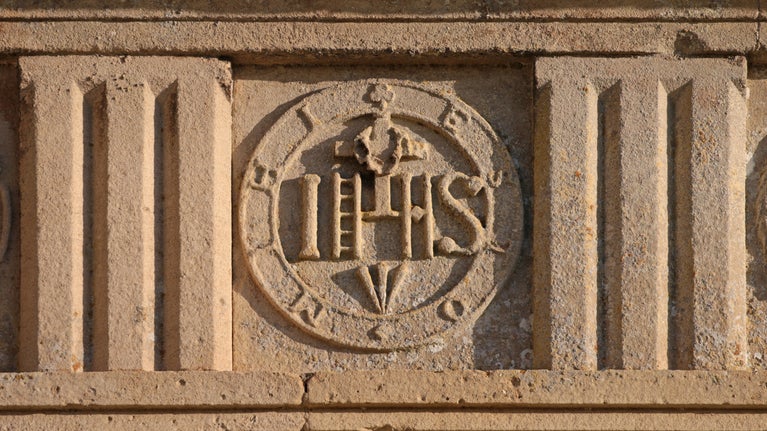
Despite facing increasing restrictions, Sir Thomas sought to improve his Northamptonshire estates. His legacy today is best observed in his extraordinary architectural and landscape designs at Rothwell Market House, Rushton Triangular Lodge and Lyveden. Deeply encoded with Catholic symbolism, these places embody Sir Thomas’s faith.
Built in the shape of a Greek cross, the architecture of the lodge at Lyveden deploys Christian numerology. For example, the number seven is used to symbolise the seven instruments of the Passion (crucifixion) of Christ. The carved frieze between the ground and first floor shows seven emblems of the Passion.
Tresham was amongst the group of influential Catholic gentlemen regularly interned during the 1580s and 1590s. With the country under heightened risk of Spanish invasion, and subsequent Catholic restoration, they were suspected of passing intelligence and spies amongst their networks. Thomas and Meriel wrote frequently while they were separated, with Meriel affectionately addressing her husband ‘Good Tres’.
Whilst held at the Bishop’s Palace in Ely in 1597, Tresham considered his plans for Lyveden, instructing his under foreman on the designs for ‘my Garden Plot wherein my garden lodge now standeth’. His papers, discovered in the walls of Rushton Hall in 1832, offer fascinating insights into the plans. Inspired by European gardens, Tresham planned to extend the garden southwards, leading to the lodge.
Designed with canals, raised terraces, viewing mounts and orchards, remarkably Tresham’s garden survives largely intact. It is one of the oldest surviving gardens in the country. From the manor house, the garden gradually unfolds, the route ascending through the orchard and moated garden to the lodge, designed as a place of retreat and for entertaining.
Today, as in the 16th century, visitors can enjoy views across the garden and to the landscape beyond by climbing the spiral mounds. Raised terraces reveal and screen views, whilst offering an elevated walkway akin to an Elizabethan long gallery.
Three sides of a moated garden were completed, creating an area surrounded by canals and with viewing mounds at each corner. Either incomplete or since lost, the centre was intended as an orchard planted with circular borders of roses and raspberries.
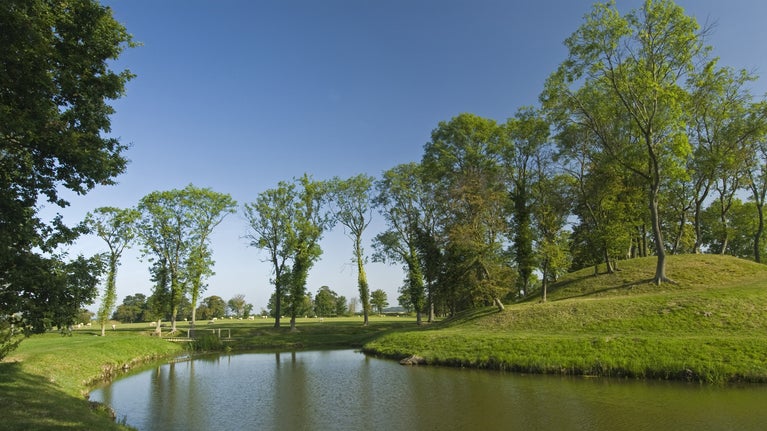
The garden lodge looks like a ruin but is actually in state of suspended completion. Unfinished when Tresham died in September 1605, it has been little touched thereafter. Although sometimes known as ‘Lyveden New Bield’ (meaning New Building), a name only used since the late 1800s, the lodge is older than the present manor house.
Francis (c.1567–1605), Thomas and Meriel’s son, inherited Lyveden shortly before he was implicated in the Gunpowder Plot. Believed to have written the warning letter that led to the discovery of the plot, Francis died awaiting trial in the Tower of London.
Meriel spent the rest of her life at Lyveden, managing significant debts following Francis’s death. Lyveden passed to Francis’s brother, Lewis (1578–1639). A portion of the manor house was built for Lewis, probably as an addition to an older house. Lewis’s son William (died c.1642) was the final heir in the main Tresham line. By 1668 the estate had been sold.
Surviving potential demolition in the 17th century, Lyveden passed through various owners, including Sir Rowland Winn, 3rd Bt. of Nostell Priory in Yorkshire. Winn’s wife, Letitia Harbord had inherited a share in Lyveden from her father, Sir William Harbord, Chief Secretary to the Lord Lieutenant in Ireland in the 1670s.
Roland and Letitia’s son sold this share in 1732 to Anne Fitzpatrick, Lady Gowran (d. 1744). Lady Gowran’s husband, Richard Fitzpatrick was an Anglo-Irish naval captain and was rewarded with land, and later an Irish peerage, following his support for William III. Her grandfather, Sir John Robinson, a merchant and Lord Mayor of London, was a committee member of the East India Company and an original member of the Company of Adventurers Trading into Africa. Both companies supported English imperial expansion, including the trade in enslaved people.
In May 1743, soldiers of the Scottish Black Watch regiment, loyal to the exiled Stuart dynasty, barricaded themselves at Lyveden. Having been ordered to London by the reigning Hanoverian King, George II, the highlanders had begun to fear a posting to the British colonies in the West Indies. Turning back, they reached Lyveden, where they were besieged for several days before being captured by the local militia. Three alleged leaders were executed at the Tower of London.
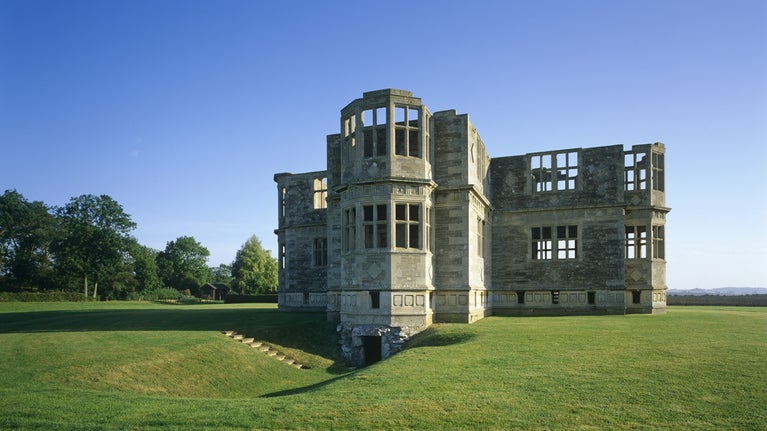
Lyveden was inherited through the female line and descended to Emma Mary Fitzpatrick (d. 1882) before passing to her husband, Robert Vernon Smith (1800–73). As MP, Vernon Smith started his political career in Ireland. During this time, he petitioned for the abolition of slavery, while his later responsibilities included oversight of the East India Company during the Indian Rebellion of 1857-8. Criticism of his performance resulted in his removal to the House of Lords, where he sat as the first Baron Lyveden from 1859.
The estate then passed through various owners until it was acquired in 1911 by Hilda Beatrice Hanbury (1872–1939), later Lady Currie. Hilda offered Lyveden for sale in 1913 and the National Trust bought an option to purchase it.
With support from a public appeal, the National Trust acquired the garden and lodge in 1922. The manor house and an additional 27 acres of grounds came into Trust ownership in 2013.
The National Trust has uncovered the Elizabethan garden, restoring the moated channels, clearing scrub and reinstating the lower orchard using many of the original fruit varieties. By establishing hay meadows and replanting hedgerows, the site is managed to encourage nature. Conservation is carefully planned, resisting the urge to over-restore or complete this rare unfinished garden. Visitors are welcomed to enjoy Tresham’s masterpiece and reflect on the story behind its creation.
Roy Strong, The Renaissance Garden in England, London 1998.
Giles Isham, ‘Sir Thomas Tresham and his Buildings’, Northamptonshire Antiquarian Society, 1966.
Julian Lock, "Tresham, Sir Thomas (1543–1605), gentleman and recusant." Oxford Dictionary of National Biography. 23 Sep. 2004; Accessed 13 May. 2025. https://www.oxforddnb.com/view/10.1093/ref:odnb/9780198614128.001.0001/odnb-9780198614128-e-27712.
M. W. Helms & Eveline Cruickshanks, ‘ROBINSON, John I (1615-80), of Milk Street, London, Nuneham Courtnay, Oxon. and Farmingwoods, Northants.’, The History of Parliament: the House of Commons 1660-1690, ed. B.D. Henning, 1983. https://www.historyofparliamentonline.org/volume/1660-1690/member/robinson-john-i-1615-80 Accessed 13 May 2025.

Find out when Lyveden is open, how to get here, the things to see and do and more.
With a manor house to see, plan your visit here, with historical talks, information on the garden design and our temporary exhibition space there's plenty to see and do.
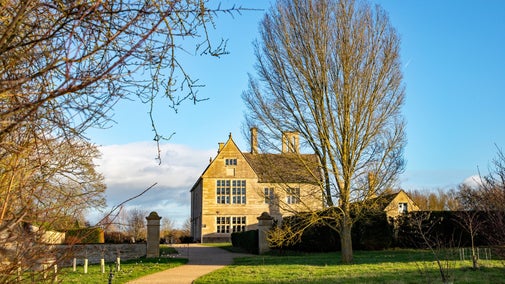
Find out more about our work at Lyveden, from restoring lost areas of the garden to using archaeology to reveal Lyveden’s secrets.

The café in the Grade I-listed manor serves a range of hot and cold drinks, light meals, snacks and cakes to keep you refreshed during your visit. Take a seat indoors or enjoy your cuppa in the outdoor seating area.

Learn about people from the past, discover remarkable works of art and brush up on your knowledge of architecture and gardens.
